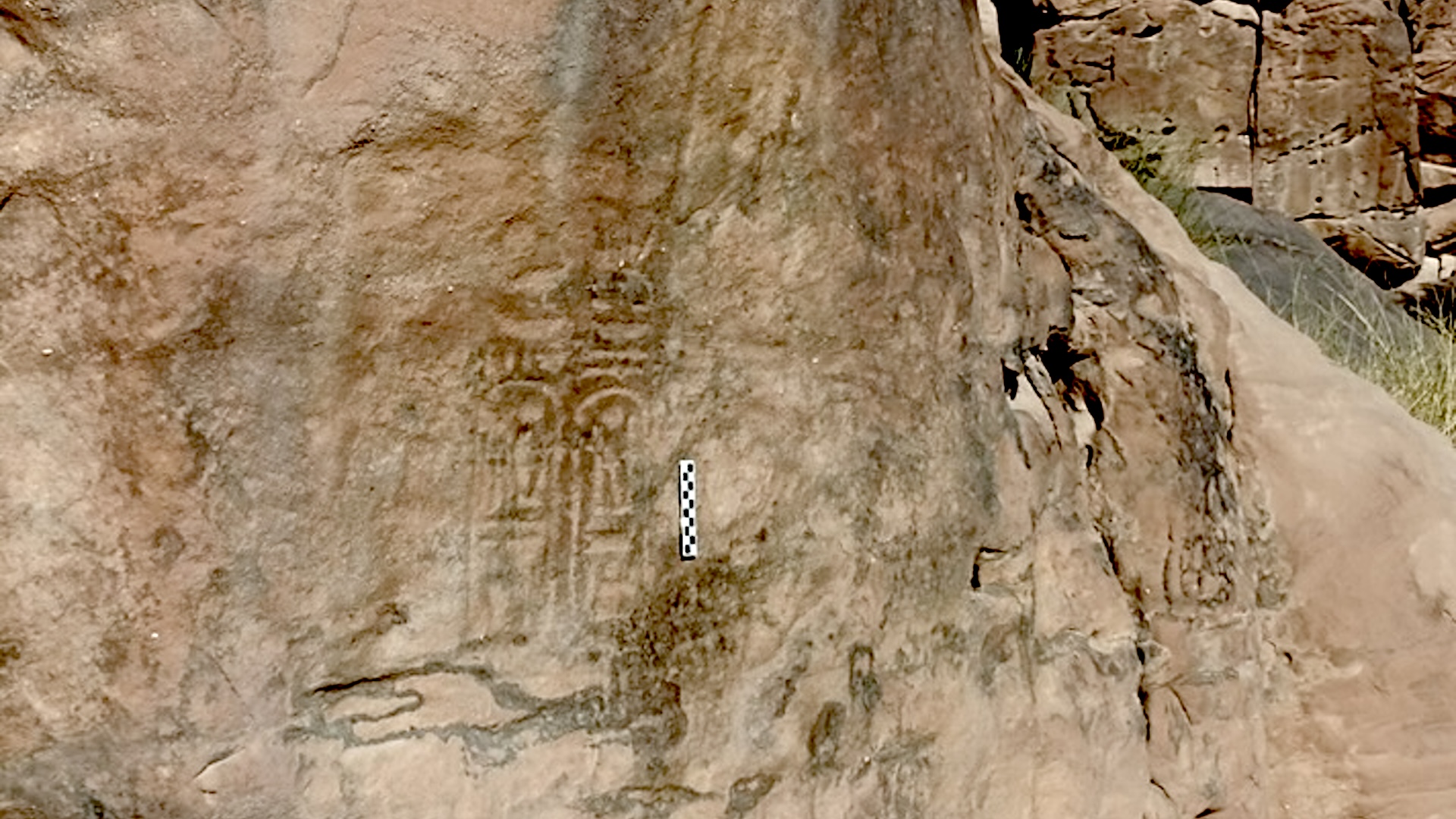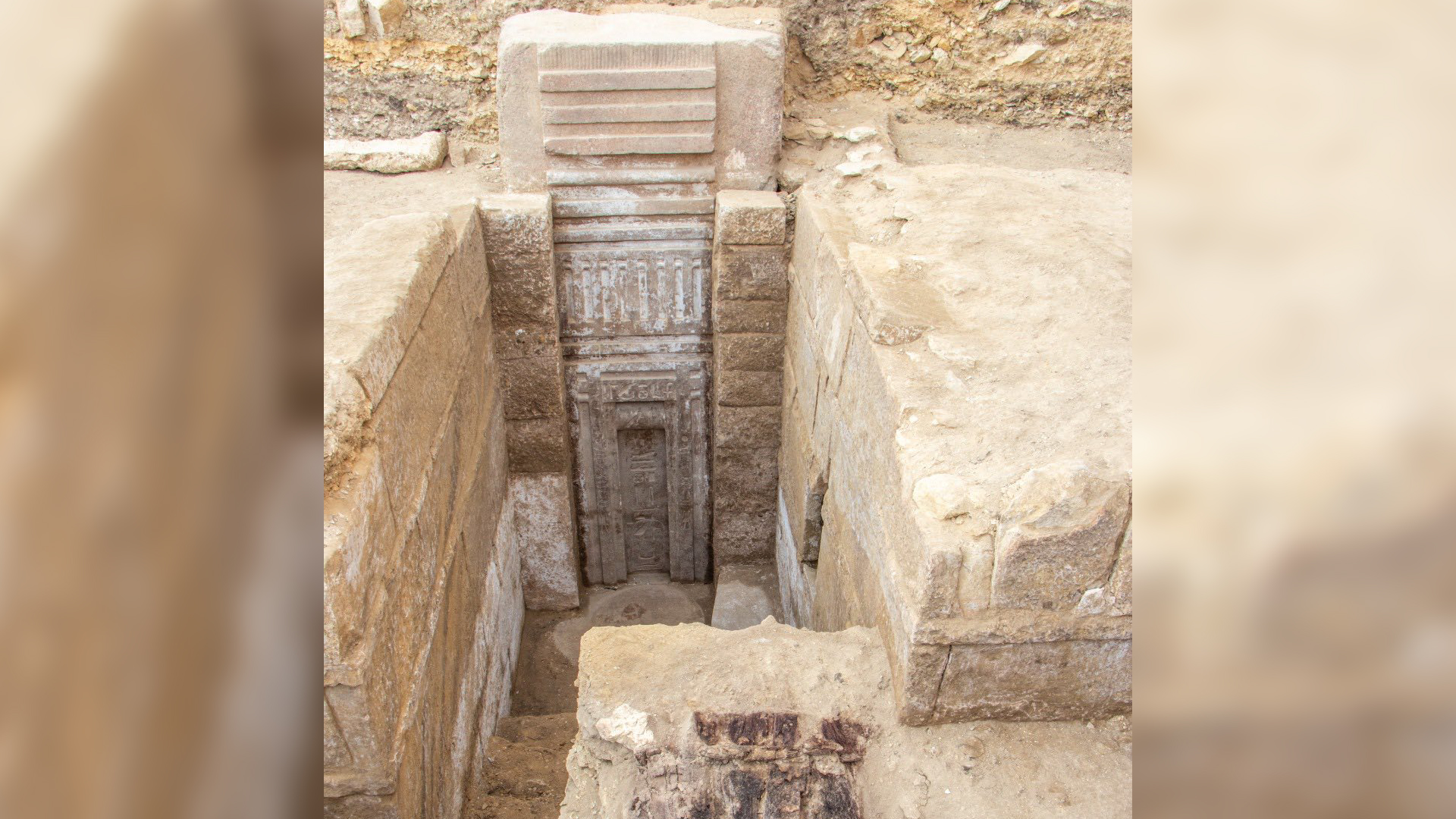'Royal Egyptian inscription' of Ramesses III's name is first of its kind discovered in Jordan
An inscription with the name of Ramesses III has been discovered in southern Jordan.

Archaeologists in Jordan have documented a carved inscription bearing the name of Ramesses III, an Egyptian pharaoh who reigned around 3,200 years ago, Jordan's Ministry of Tourism and Antiquities said in a translated statement.
Ramesses III (reign circa 1184 to 1153 B.C.) ruled at a tumultuous time in the region's history. A number of major powers in the region — such as the Mycenaeans (who were based in Greece and the Aegean islands) and the Hittites (who were based in Turkey) — collapsed, and a group known as the "Sea People" invaded parts of the Middle East, including Egypt. Historical records say Ramesses III defeated the Sea People's invasion of Egypt and campaigned in the eastern Mediterranean, maintaining Egypt's empire.
The inscription, which would have been carved by Ramesses III's army, is in the Wadi Rum protected area, a desert in southern Jordan that contains numerous archaeological remains. Although the existence of the inscription was known to a few people, it wasn't until the past year that it was scientifically documented.
The inscription is "near a natural spring, in a location that is extremely difficult to access," archaeologist Ali Al-Manaser told Live Science in an email. He is the head of the Department of Cultural Resources Management and Museology at Hashemite University in Jordan and helped document the inscription.
"This discovery is particularly significant as the inscription is the first of its kind found in Jordan — a royal Egyptian inscription carved into a fixed, large stone that is part of a mountain formation," Manaser said. "Previously, another Egyptian inscription was discovered in the northern region of Jordan; however, it was inscribed on a moveable rock. In contrast, this newly documented inscription is on an immovable, prominent rock face."
Zahi Hawass, a former minister of antiquities in Egypt who is working with researchers in Jordan, said the inscription gives the name of Ramesses III and calls him "Sa-Re," which means "son of Re" (also spelled Ra), a sun god of Egypt. The name was inscribed when Ramesses III led an army that passed by the area, Hawass told Live Science in an email.
He noted that the army of Ramesses III also carved an inscription with the pharaoh’s name at Tayma, a settlement in what is now northwestern Saudi Arabia.
Sign up for the Live Science daily newsletter now
Get the world’s most fascinating discoveries delivered straight to your inbox.
Ramesses III likely went through Jordan to maintain access to precious goods, Manaser said. The pharaoh "would have sought to secure these trade routes to maintain Egypt's access to resources like copper, which was abundant in the southeast of Jordan," Manaser said.
No related artifacts were found beside the inscription. However, the archaeological exploration of nearby areas is ongoing, and it's possible that more evidence of Ramesses III's campaigns in the region will be found in the future, Manaser said.

Owen Jarus is a regular contributor to Live Science who writes about archaeology and humans' past. He has also written for The Independent (UK), The Canadian Press (CP) and The Associated Press (AP), among others. Owen has a bachelor of arts degree from the University of Toronto and a journalism degree from Ryerson University.
You must confirm your public display name before commenting
Please logout and then login again, you will then be prompted to enter your display name.









